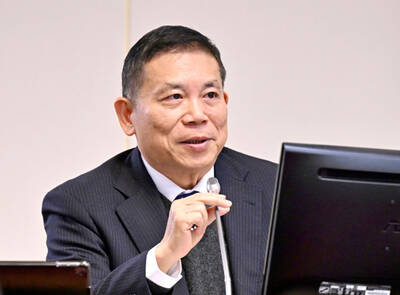The US dollar drifted higher on Friday after three straight days of losses, and riskier currencies fell, as bleak non-US economic data gave global equity markets reason to pause after another week of record highs.
As a safe haven, the US currency tends to rise in times of financial and economic stress that results in lower risk appetite.
The S&P 500 and the Dow Jones Industrial Average along with US Treasury yields were lower as well, suggesting a generally somber mood in financial markets.
The US dollar did pare gains and riskier currencies cut losses earlier after upbeat US economic data — a rise in factory activity to its highest in more than 13 years this month and an unexpected 0.7 percent gain in existing home sales.
The greenback had fallen against a basket of currencies for the past three sessions as market optimism about new US President Joe Biden’s fiscal stimulus plans prompted traders to seek riskier assets, producing gains in currencies such as the New Zealand and Australian dollars.
However, that trend paused on Friday, as market sentiment pulled back.
Global shares slipped off record highs as the US dollar steadied, up 0.1 percent on the day at 90.21.
However, the dollar index still posted its biggest weekly loss since the middle of last month, falling 0.6 percent.
The US Federal Reserve would next week hold its first monetary policy meeting of the year and strategists expect the Fed to stay dovish, and officials “will probably note signs of slowing in the economy since the December meeting,” NatWest Markets said in a research note.
Gloomy economic data also did little to brighten the mood, as UK data showed that British retailers struggled to recover last month.
In Taipei, the New Taiwan dollar fell against the greenback, losing NT$0.008 to close at the day’s low of NT$28.381, but rose 0.3 percent for the week.
In afternoon trading, the US dollar rose 0.3 percent against the yen to ¥103.815, little changed for the week.
Data from Japan overnight showed factory activity slipped into contraction this month and the services sector was more pessimistic as emergency measures to combat a COVID-19 resurgence dampened sentiment.
The Australian dollar fell after disappointing retail sales data, but still posted weekly gains. It was down 0.6 percent at US$0.7718.
The New Zealand dollar was down about 0.6 percent at 0.7179 versus the US dollar.
The euro was little changed at US$1.2167, up 0.8 percent for the week. The single currency rose on Thursday after the European Central Bank’s policy rate announcement, with the bank saying it might not need to use its full asset-purchase envelope.
The Norwegian krone was hurt by lower commodity prices on Friday, slumping 1.1 percent against the US dollar to 8.4940.
Additional reporting by CNA, with staff writer

UNCERTAINTY: Innolux activated a stringent supply chain management mechanism, as it did during the COVID-19 pandemic, to ensure optimal inventory levels for customers Flat-panel display makers AUO Corp (友達) and Innolux Corp (群創) yesterday said that about 12 to 20 percent of their display business is at risk of potential US tariffs and that they would relocate production or shipment destinations to mitigate the levies’ effects. US tariffs would have a direct impact of US$200 million on AUO’s revenue, company chairman Paul Peng (彭雙浪) told reporters on the sidelines of the Touch Taiwan trade show in Taipei yesterday. That would make up about 12 percent of the company’s overall revenue. To cope with the tariff uncertainty, AUO plans to allocate its production to manufacturing facilities in

TAKING STOCK: A Taiwanese cookware firm in Vietnam urged customers to assess inventory or place orders early so shipments can reach the US while tariffs are paused Taiwanese businesses in Vietnam are exploring alternatives after the White House imposed a 46 percent import duty on Vietnamese goods, following US President Donald Trump’s announcement of “reciprocal” tariffs on the US’ trading partners. Lo Shih-liang (羅世良), chairman of Brico Industry Co (裕茂工業), a Taiwanese company that manufactures cast iron cookware and stove components in Vietnam, said that more than 40 percent of his business was tied to the US market, describing the constant US policy shifts as an emotional roller coaster. “I work during the day and stay up all night watching the news. I’ve been following US news until 3am

Taiwan will prioritize the development of silicon photonics by taking advantage of its strength in the semiconductor industry to build another shield to protect the local economy, National Development Council (NDC) Minister Paul Liu (劉鏡清) said yesterday. Speaking at a meeting of the legislature’s Economics Committee, Liu said Taiwan already has the artificial intelligence (AI) industry as a shield, after the semiconductor industry, to safeguard the country, and is looking at new unique fields to build more economic shields. While Taiwan will further strengthen its existing shields, over the longer term, the country is determined to focus on such potential segments as

COLLABORATION: Given Taiwan’s key position in global supply chains, the US firm is discussing strategies with local partners and clients to deal with global uncertainties Advanced Micro Devices Inc (AMD) yesterday said it is meeting with local ecosystem partners, including Taiwan Semiconductor Manufacturing Co (TSMC, 台積電), to discuss strategies, including long-term manufacturing, to navigate uncertainties such as US tariffs, as Taiwan occupies an important position in global supply chains. AMD chief executive officer Lisa Su (蘇姿丰) told reporters that Taiwan is an important part of the chip designer’s ecosystem and she is discussing with partners and customers in Taiwan to forge strong collaborations on different areas during this critical period. AMD has just become the first artificial-intelligence (AI) server chip customer of TSMC to utilize its advanced